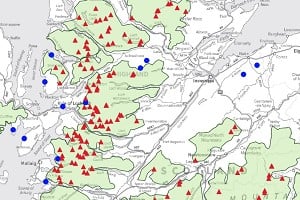
The proposal for a major power development at Caplich near Oykel Bridge is a wind farm too far for many wild land campaigners. The MCofS have spoken out against the 20-turbine wind farm, which would be visible from some of the most iconic mountains of the far northwest, from An Teallach to the peaks of Assynt, and which would, they say, 'turn the Coigach-Assynt National Scenic Area into a very ordinary non-scenic area'. Objectors have only until Monday 2 March to register a view with the Scottish Government. Alex Roddie is strongly opposed to the plan, and thinks that anyone who shares his stance has a duty to formally object. Here's why:
Wind turbines. Everyone seems to have an opinion on them, and the debate has become fierce. I can understand why. The population of Britain is booming, requiring more energy for economic growth and to avoid power blackouts. Climate change has made us all aware that our energy has got to come from less destructive sources. Wind turbines seem like a fairly quick and easy solution.
"A wind farm in highly developed countryside is arguably just another step along a scale – the damage has already been done. But what about in wild land, a precious and dwindling resource?"
But is wind power an effective source of renewable energy? Opinion is divided. Scottish Natural Heritage (SNH) has this to say about wind energy:
"Scotland has one of the best wind resources in Western Europe, so the Scottish Government has identified wind energy as being very important to meeting the renewable energy generation required under the Renewables Obligation (Scotland). As a result, the scale of renewable wind energy development is likely to be substantial and this could bring about major changes to our landscapes and have significant impacts on Scotland's nature."
However, the Windfarm Action Group (WAG) is strongly of the belief that wind farms are less effective:
"We are convinced that Wind Power
- is not a technically legitimate solution
- does not meaningfully reduce CO2 emissions
- is not a commercially viable source of energy
- is not environmentally responsible."
And what about the visual impact? Wind farms are huge. Location has become all-important – and the battle is fiercely fought.
Put a wind farm down in a highly developed patch of countryside, and it's arguable that this is just another step along a scale – that the damage has already been done. But what about wild land, which is a precious and dwindling resource in the British Isles? We have no wilderness left, but we do have wildness.
"This wild land is very special. It's unlike anywhere else in the UK. Caplich is a serious threat and we have to act now before this region is damaged forever"
Today I'd like to talk about a specific wind farm development: Caplich, a proposed site near Oykel Bridge that I believe will do serious damage to the wild land of Scotland if it is approved.
The wild North West
A few years ago, I went on a cragging road trip with some friends. I was living in Glen Coe at the time and it was a wet summer, with little prospect of dry rock climbing. Jamie suggested a run up to the sea cliffs of Sheigra, near Sandwood Bay. I'd never been that far north before.
The weather cleared before we got to Inverness. As we drove through the sunny paradise of Assynt, I found myself unable to look away from those towering, prehistoric mountains that reared like dinosaurs out of the jigsaw of lochans and peat – a beautiful natural texture, at once rough and sparkling, that stretched for many miles away to the Atlantic. It felt like an entirely different world.
We camped on the soft grass beside the beach at Sheigra. The weather was warm and calm. I was captivated by the perfect blue of the waters, and I don't think I have ever been so relaxed while camping before or since. Sea birds called and I drifted off to sleep with the sound of the surf in my ears. The next day, we climbed for hours on pristine, sun-washed cliffs – devoid of other climbers, damaged gear placements, or abandoned tat – before reluctantly returning home to the murk and the clag of Glen Coe.
I never forgot the beauty of Assynt or Sutherland. That visit was enough to stamp a certain knowledge in my mind that this wild land is very special. It's unlike anywhere else in the UK, and somehow doesn't quite feel like the rest of Britain. More experienced voyagers in the NW will know exactly what I mean. That sense of north, of wildness, is not to be found anywhere else in these islands.
And that unique quality is under threat.
"The outdoor community is rallying around this cause. Please consider making your voice heard"
The wind farm development
The proposed Caplich Wind Farm would place twenty turbines, each 132 metres high, right on the edge of Assynt. The Cape Wrath Trail, a long-distance route linking much of the best wild land we have left in this country, actually passes through Oykel Bridge. If the development goes ahead, it's going to change the nature of that walk and destroy the sense of wildness in those regions.
Here's the visual impact assessment of this wind farm:
As you can see, the turbines will be visible from many of the best-loved summits in the area. Ben More Assynt, Cul Mor, Canisp, An Teallach – those views will change if this goes ahead, and views matter. When a walker sees wild land from a summit, they are more likely to fight to protect it; but if they see human development, that urge diminishes. Another link in the fragile chain that protects our wild land is weakened. It's the psychology that leads to people discarding more litter if they see a crumpled Coke can in an alleyway.
What do the developers say? In a non-technical summary they state that "… it was found that the introduction of Caplich Wind Farm would reduce the wild land characteristics in the immediate surroundings of the site, but that this would not have a significant effect on the wild land characteristics of the 'Reay – Cassley' Wild Land Area as a whole."
But the Mountaineering Council of Scotland has strongly condemned this planned development, precisely on the grounds of its serious impact on these very wild land areas.
MCofS Chief Officer, David Gibson, says that "The proposed development will change key physical wild land attributes of the Wild Land Area it is partly located in and of surrounding Wild Land Areas. The area available to people who wish to avoid vistas of wind farms is shrinking rapidly; this development would reduce that further, discouraging more visits by those seeking to experience wild, open mountain landscapes."
I'm not here to tell you whether or not wind energy is the way forward. What I do know is that humanity's purpose on this earth is not to despoil it for profit or short-term gain. Our species has the unique position of being able to choose our role in nature. Do we want to be custodians of the precious, dwindling resource that is wild land, protecting it for a time beyond our own limited vision, or do we want to exploit it for short-term profit before moving on to consume the next natural resource?
I know that energy for human growth has got to come from somewhere. But this is not the right place for this wind farm because it will set a catastrophic precedent for this wild area of Scotland, and once that wildness is lost, it won't come back. I genuinely believe this is a serious threat and we have to act now before this region is damaged forever.
If you wish to object to this development, and I believe it's your duty to do so if you agree with my point of view, then you can add your thoughts here. Objections must be made by the 2nd of March.
The outdoor community is rallying around this cause. Please consider making your voice heard.
Further reading
Scotland's fabulous north west is about to be destroyed (Alan Sloman)
Allt Duine, Wind Farms & Wild Land (Chris Townsend)
The Fall of Assynt (James Boulter)
About the author
Regular UKH contributor Alex Roddie is a freelance editor, writer, and outdoor enthusiast. He divides his time between editing the work of others and writing about mountains. His passion is the history of mountaineering and he has published two novels on the subject, The Only Genuine Jones and The Atholl Expedition. He is currently working on his third novel.
For more on what he's up to see Alex's website
- One Minute Mountain: Steeple 4 Feb, 2021
- SKILLS: Snowshoes in Scotland - more than just a novelty 31 Dec, 2020
- One Minute Mountain: Garbh Bheinn 7 Dec, 2020
- One Minute Mountain: Mam Tor 16 Nov, 2020
- One Minute Mountain - The Cheviot 14 Sep, 2020
- One Minute Mountain: Skiddaw 17 Aug, 2020
- One Minute Mountain: Ben Alder 27 Jul, 2020
- How to Hike the Haute Route Pyrenees 23 Jul, 2020
- One Minute Mountain: Fairfield 29 Jun, 2020
- One Minute Mountain: Beinn Eighe 8 Jun, 2020



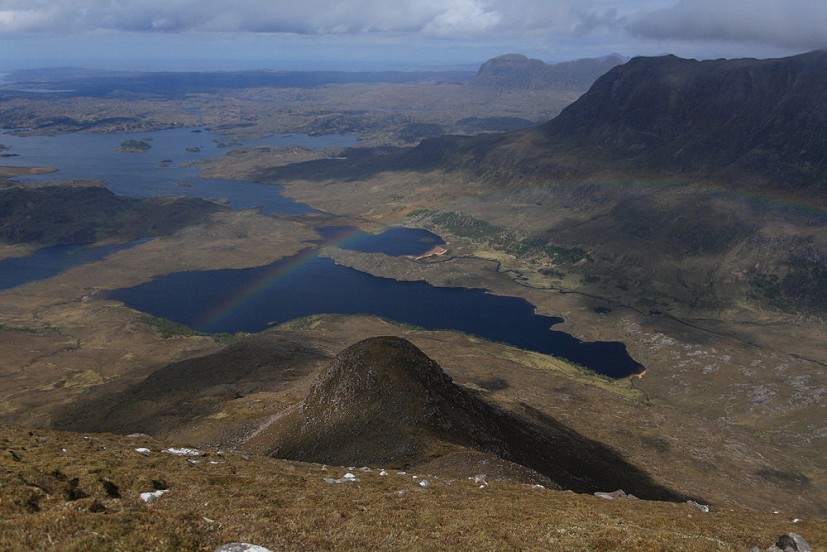


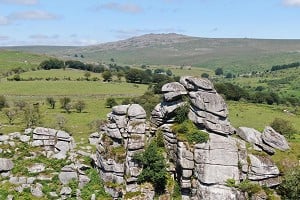
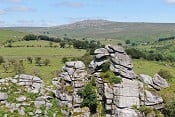


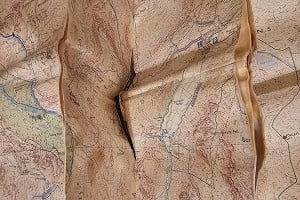



Comments